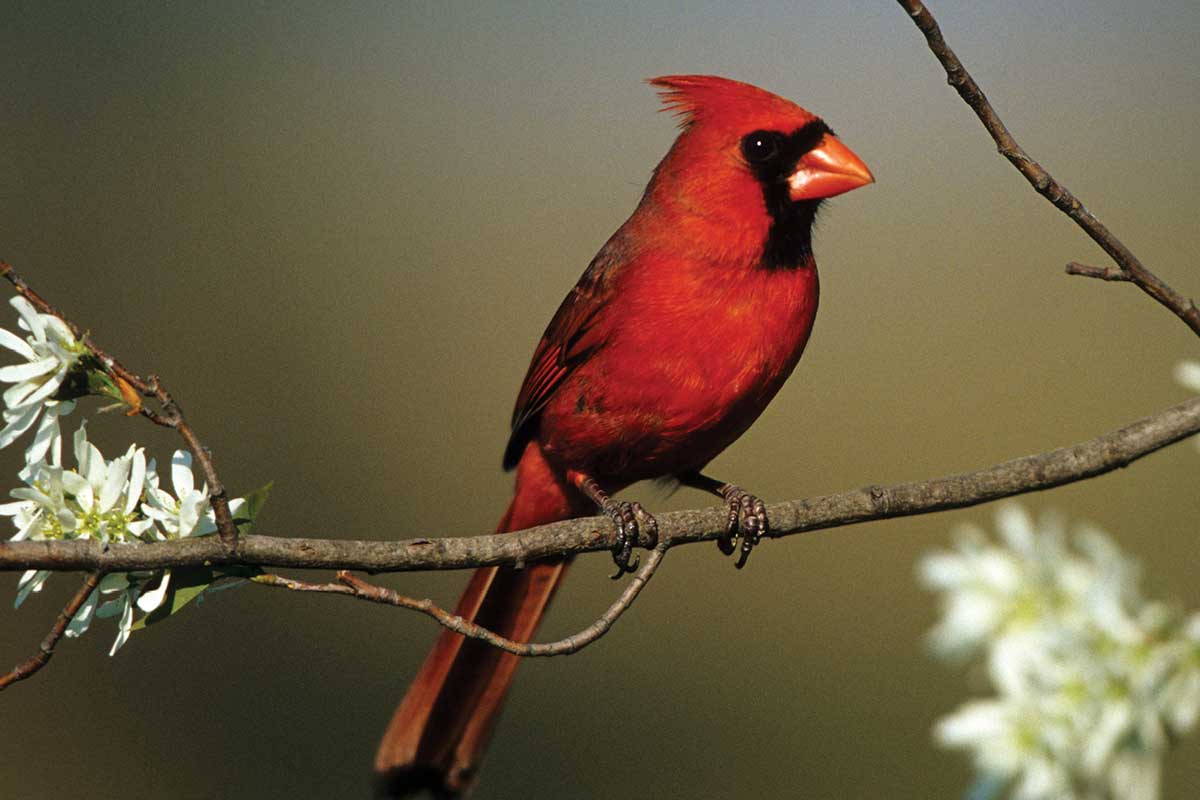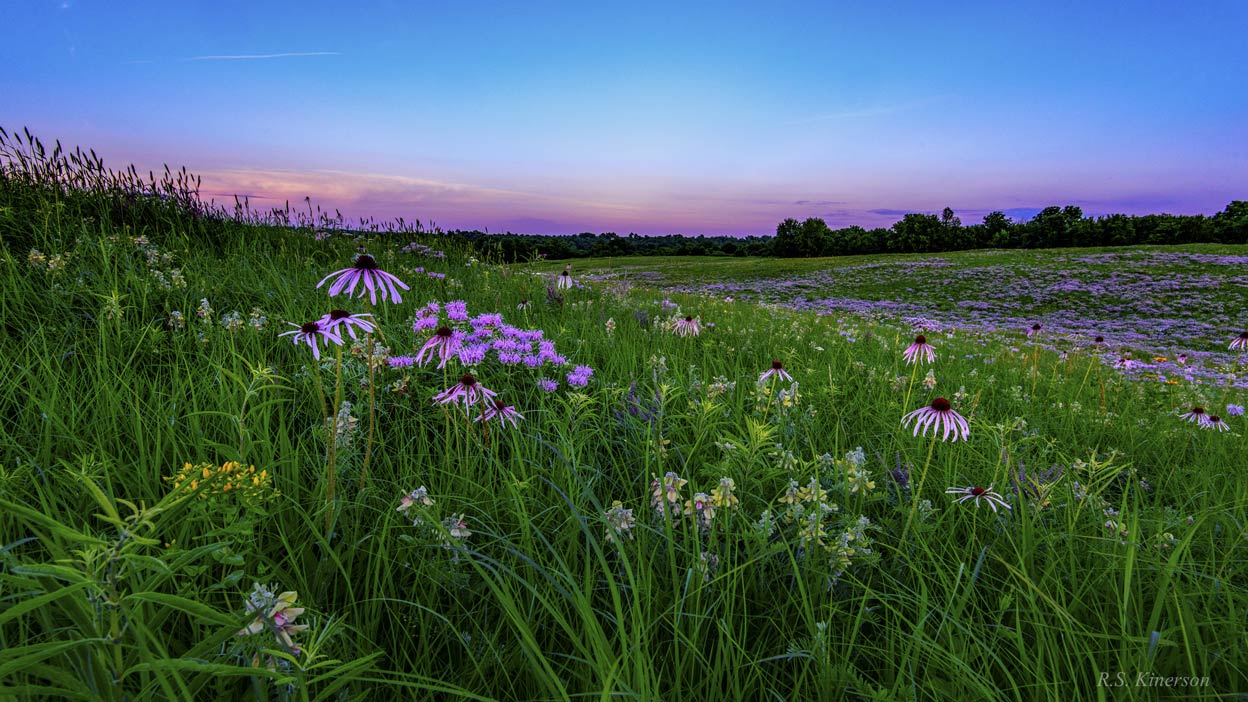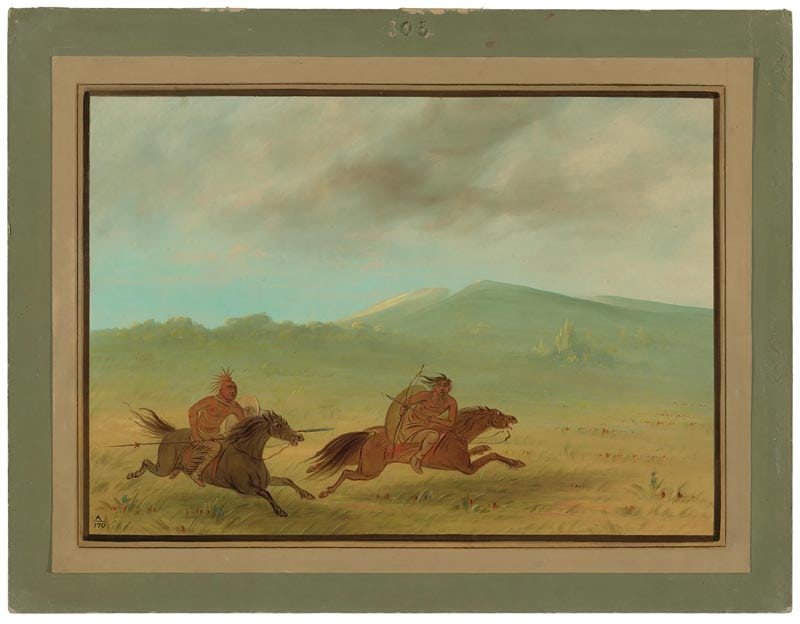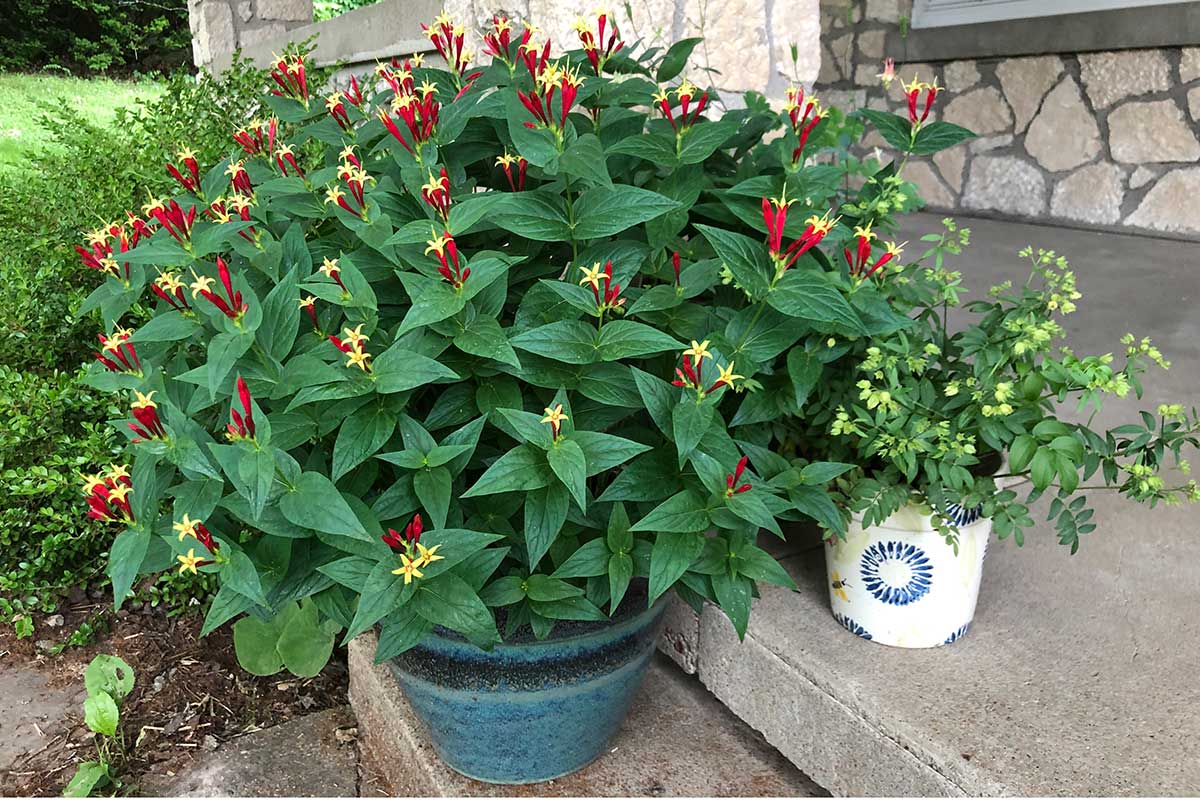
Native plant micro-gardening is an eco-friendly answer for tiny spaces.
This article originally appeared in the March/April 2022 edition of Missouri Life magazine.
Missourians garden so well that they can cultivate plants in any amount of space, whether it’s an acreage behind a homestead or flower pots on an apartment balcony. They garden in fields and in yards and also in beds and in buckets.
Native plants have been a trend in larger landscapes, but now they’re popping up in small spaces, too. Native plants help resist invasive plant species and strengthen the habitat overall. They require little to no maintenance and vastly improve soil quality.
Native plants are defined as those that are naturally occurring in an area. The current mix of native plants in Missouri has been here since the last Ice Age, around ten thousand years ago. These plants are well-adapted to the state’s climate, soil type, and moisture level. They are adapted to our state’s wildlife and geology, and depend on our ecosystem for survival.
Experts agree it is important to incorporate Missouri native plants into whatever garden you tend, even if there isn’t room for an extravagant setup.
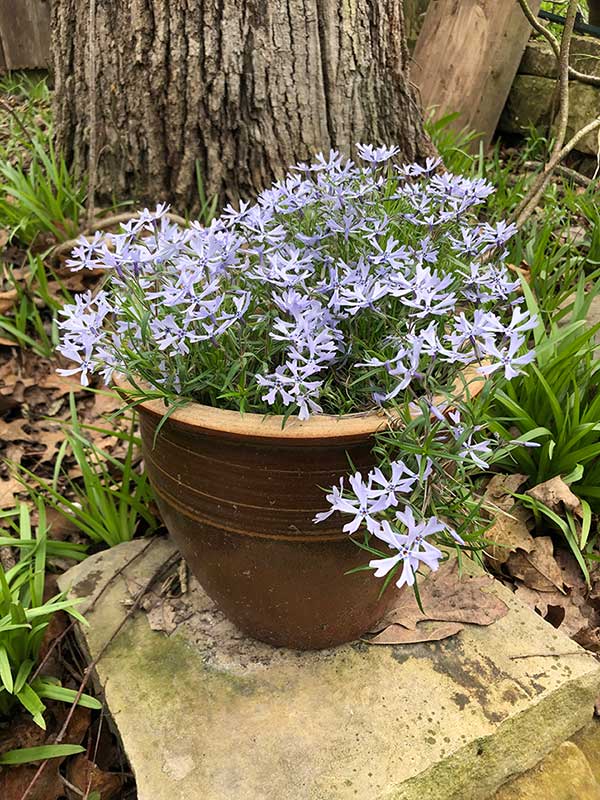
“There are many reasons why native gardening is important in Missouri,” says Jesze Doleh, a park specialist at Thousand Hills State Park in Kirksville. “The selling point for me is that it’s easier, sustainable, and beautiful. You do not have to plant something non-native to have a beautiful garden. Since native plants are well-adapted for the area, they do not require as much work and can be grown without fertilization, which is beneficial to the environment.”
Plant-lovers with minimal space can reap the benefits of growing native in small spaces or containers, a method known as microgardening. Micro-gardener creativity abounds. Wooden crates, custom raised beds, old car tires, old buckets, and other unique containers serve as planters.
“I like to incorporate native plants in my own home gardening and landscaping efforts,” says Michael Seipel, Agricultural Science department chair at Truman State University, in Kirksville “because they are often more hardy and drought tolerant due to local adaptation and provide food and/or cover to native pollinators and other wildlife. Personal favorites are columbine, purple coneflower, Indian grass, and big bluestem.”
Native micro-gardens are low maintenance, sustainable options that require little to no fertilization. They attract birds, bees, butterflies, and other beneficial insects. Don’t know where to start? Consult this list, organized by US Department of Agriculture (USDA) Hardiness Zones.
Missouri is broken up into four primary USDA Hardiness Zones, each zone with its own specific native plant selection that thrives best in that area. The zones are determined by the lowest expected winter temperatures. Missouri has a diverse range of hardiness zones, from 5b in the north to 7b in the Bootheel.
While the hardiness zones are good indicators of what native plants thrive best in a particular area, other factors such as sun exposure and soil types can also influence the choice. Nurseries that specialize in Missouri’s native plants can lead you toward the best selections to beautify your small spaces.
Zone 5b
Northern Missouri (St. Joseph, Kirksville)
Minimum Winter Temperature: -15 to -10.
Native Plants:
Swamp Dogwood
Hickories
Mulberries
Bluestem Grasses
Blazing Stars
Native Pawpaw Trees
Honey Crisp Apple
Lavender
Black-eyed Susan
Where to purchase native plants
Claire’s Garden
23198 Highway H/Boundary Street, Kirksville
Trees, shrubs, native plants, fresh vegetables, hosta, and perennials, cut and dried flowers.
Where to see native plants
Thousand Hills State Park
20431 Mo-157, Kirksville
Hiking, camping, and boating in a state park that holds remnants of historic native grasses and savannah. Controlled burning and selective cutting aid the restoration of savannah and prairie species such as Indian grass, blazing star, rattlesnake master, and more.
Zone 6a
Central Missouri (Kansas City, Columbia, Jefferson City)
Minimum Winter Temperature: -10 to -5
Native Plants:
Blazing Stars
Indian Pink
Butterfly Weed
Common Milkweed
Purple Coneflowers
Cardinal Flower
Fringe Tree
Evening Primrose
Blue Aster
Where to purchase native plants
SunRise Gardens LLC
5771 East Richland Road, Columbia
Dedicated to wildflower gardens and sustainable landscapes, specializing in habitat gardens for butterflies, bees, pollinators, hummingbirds, and songbirds.
Pure Air Natives
4630 West Florissant Ave., St. Louis
Live native plants, grass, and wildflower seeds. Plant plugs and seed mixes are used for prairie restoration and recreation.
Where to see native plants
Columbia Audubon Nature Sanctuary
3607 Bray Avenue, Columbia
23 acres developed specifically as an outdoor education experience highlighting native prairie and forest habitats.
Zone 6b
Southern Missouri (St. Louis, Springfield, Carthage)
Minimum Winter Temperature: -5 to -0
Native Plants:
Indian Gras
Ashy Sunflower
Wild Bergamot
Big Bluestem
Pale Purple Coneflower
Indian Paintbrush
Tickseed Coreopsis
White Prairie Clover
Red Oak
White Oak
Sensitive Brier
Round-headed bush clover
Where to purchase native plants
Grass Roots Garden Center
2953 Cologna Road, Marshfield
A wide variety of shrubs, annuals, native plants, trees, and landscaping materials.
Where to see native plants
Ha Ha Tonka State Park
1491 Missouri D, Camdenton
Lush ground cover of native sedges, grasses, and forbs. It is documented that there are more than 500 native plant species found within the park, from white oaks to Missouri primrose.
Zone 7a
Southeastern Missouri (Poplar Bluff, New Madrid)
Minimum Winter Temperature: 0 to 5
Native Plants:
Palm Sedge
Spicebush
Columbine
Missouri Primrose
Cardinal Flower
Purple Coneflower
Marsh Milkweed
Mulberry Trees
Marjoram
Butterfly Weed
Peony
Where to purchase native plants
Ozark Soul Native Plants
175 Tullemor Lane, Thornfield
Offers native plants grown from seed collected throughout the Ozark region.
Where to see native plants
Morris State Park
State Highway WW, Campbell
161 acres of local native plants and trees alongside hiking trails and the unique geological structure Crowley’s Ridge.
It should be noted that Missouri also includes USDA hardiness zone 7b at the extreme tip of the Bootheel.
Grow Native! is a joint education and marketing program of the Missouri Department of Conservation and the Missouri Department of Agriculture, and can assist with your native planting plans. The organization’s website, grownative.org, includes in-depth information on native shrubs, grasses, sedges, vines, forbs, and trees.
Related Posts
Missouri’s Native Flowering Trees
Missouri blooms in spring with native trees showing off their glories. Consider adding our native trees to your own landscape. They frequently have the advantage of requiring less water and lower maintenance, and they provide food for wildlife.
Here’s Our Guide to Growing Native Plants
By landscaping with native Missouri plants, gardeners with the palest of green thumbs can enjoy such views just like the pros, all while knowing they’ve done their part to nurture complex ecosystems.
10 Books on Missouri’s Native American History
Looking for more reading on the Osage and Missouria tribes? Parts 2 and 3 of our special series are forthcoming in September and October, but in the mean time we highly recommend this selection of books that cover the subject.

